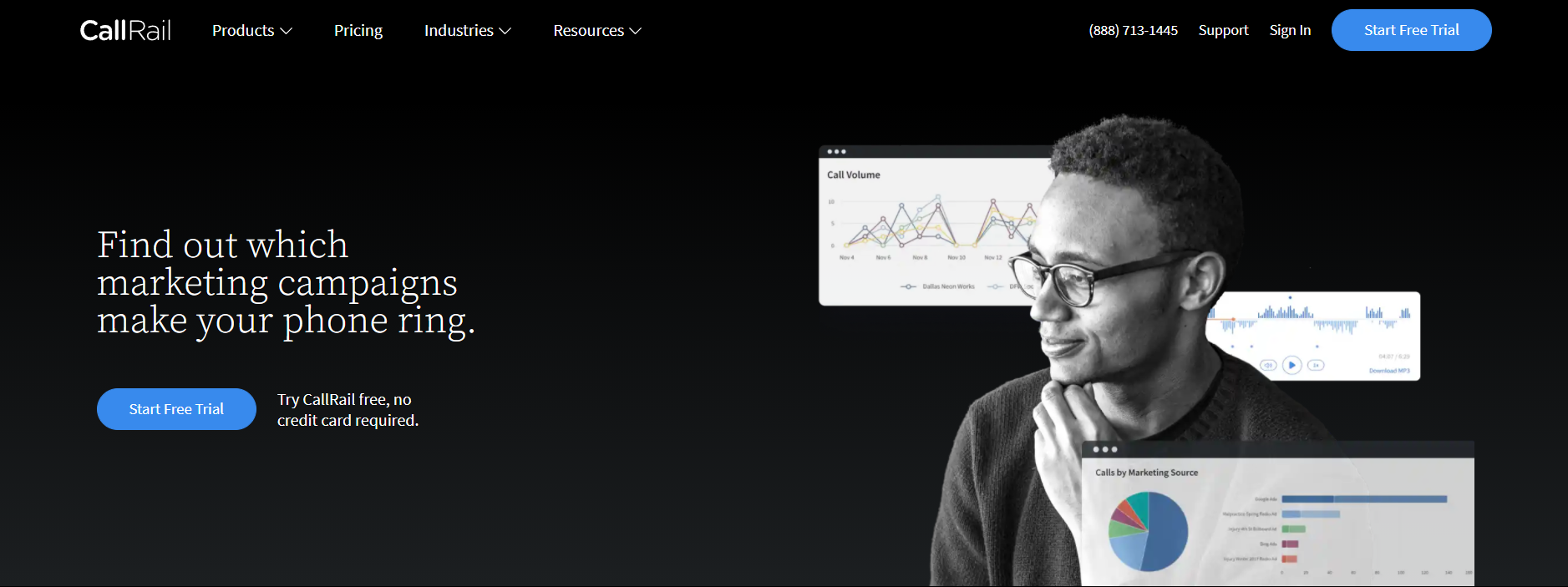It’s okay; I do it too. Anytime I talk about cookies in the context of marketing, I picture a big delicious chocolate chip cookie. It’s only natural. Of course, cookies, the marketing kind, have traditionally served a far different purpose. Take it from IBM Watson Advertising, which provides a tidy definition of what cookies are:
“Cookies are small pieces of code that are placed within your browser whenever you visit a specific website. They typically contain two pieces of information: 1) the site name and, 2) a unique user ID. Cookies may capture details such as website configuration, language preferences, login information, or any products you’ve added to your online shopping cart.”
When the owner of a website “cookies” you directly, that’s called a first-party cookie. Businesses and brands use first-party cookies to remember different information, preference, behavior, and so on. On the other hand, other domains can put their cookies on other sites (Walmart, for example, or Amazon) using special scripts. In the past, businesses have used third-party cookies to serve up targeted ads on other sites based on a person’s observed behavior.
Got it? Good, because it’s all in the process of going away for good.
What to Know About the Move to Cookieless Browsers
A couple of developments in privacy protection have precipitated the move to cookielessness. While the world’s second and third largest browsers, Safari and Firefox, phased out cookies almost a decade ago, Google Chrome is soon to follow.
By and large, these decisions appear to be in response to the mounting groundswell around protecting people’s personally identifiable information (PII). Indeed, the emergence of laws like the General Data Protection Protection (GDPR) seems to reflect this closer attention to data privacy—as does The Privacy Sandbox from Google, for that matter.
While Google has announced its plans to delay phasing out cookies from Chrome until 2023, that day is likely coming. So as the world moves toward cookieless browsers, now is the time to prepare your marketing strategy.
The Impact of Cookieless on Your Advertising
As you start adjusting your strategy, there are a few things to keep in mind. There’s a big difference between authenticated and anonymous targeting. Due to user hesitancy to share data, as well as ad blockers that limit data sharing, there’s a lot less authenticated data sent to advertisers.
This, coupled with a shift to first-party data and data providers, creates significant challenges for marketing attribution and retargeting practices. It’s going to be a lot more difficult, for example, to connect browsing activity to conversions. In terms of retargeting, you’re going to have a lot less information to base your retargeting campaigns on, which can have ripple effects on accuracy, relevance, conversions, and overall cost.
Asa Whillock, head of product operations and strategy for Adobe Digital Experience, sums up the impact of cookieless browsing well:
“The stages that will be most impacted by the cookie changes are the beginning stages — during these early interactions with a brand, users have not provided contact information.”
Adjustments to Marketing That You Should Make Now
As to the way you collect data and advertise, down to how your Google Ads work at all, it will require some close attention. Here’s where we recommend focusing your efforts:
Plan for a New Data Collection Strategy
There are other ways to gather useful data to support and inform your marketing efforts. The most obvious approach is to use an opt-in process—one of those “Accept All Cookies” disclaimer windows you’re likely familiar with. You can also shift your focus to bringing in more “offline” data, such as existing customer profiles and purchase history or demographics. And there are plenty of data marketplaces where you can buy data.
Tie Your Data Systems Together
In the world of healthcare, the sources of valuable marketing data tend to be numerous and, unfortunately, loosely connected. Yet, you’ll need to tie these systems together to get the most out of the data you are able to collect. This includes:
- Analytics
- Customer data platform
- Marketing automation
- Scheduling software
- CRM
- EHR
Simple as flipping a switch, right? Not exactly. While some platforms are designed to play well with each other, including out-of-the-box integrations, others require a special API or custom solutions. In both cases, your IT team, data scientists, and others will need to get involved.
Get a Better Understanding of Patient Needs, Wants, and Preferences
You might think that all your target audience needs is “quality, compassionate, and personalized primary care” or “affordable and convenient outpatient rehab.” However, the needs of healthcare consumers go a lot deeper than top-level benefits.
One place to look for these deeper insights is from your customers themselves. What can you learn from surveys, health questionnaires, and health forums? What does your target consumer really want, and how can you use that information to build more targeted and engaging campaigns?
A/B Test Your Ads
If you can’t target healthcare consumers using traditional sources of data, let the audience choose based on your ad creative. Your audience will naturally self-select the content and messaging that resonates with them most. What’s more, that data will be readily available to you—and it’s objective, too: either variation A or B wins.
That said, you can do a lot more with A/B testing than just compare the performance of competing ad creative. The team at Quantcast has put together a terrific guide to A/B testing for display advertising.
Focus on Contextual Advertising
While you might not have cookie data at your disposal, you can still make sure your banner ads hit the right people. In contextual advertising, you don’t display ads based directly on a person’s behavior (history, what they’ve clicked, preferences, and so on), but the relevance of the sites they visit in relation to your ads.
Here’s a simple example. Let’s say you’re a plastic surgeon that specializes in breast augmentation. You might have a segment of prospective patients doing research online, asking questions like, “how long does it take to recover from breast augmentation?” If those patients end up on this American Society of Plastic Surgeons page, wouldn’t it be nice if your Google Ad promoting your breast augmentation services did, too?
That’s contextual advertising in a nutshell. However, keep one thing in mind: the site(s) you want to place ads on needs to be part of the ad network you’re using (Google AdSense, for example). As you probably noticed when you clicked through to the ASPS page that I included above, there are no display ads. Just because a website makes sense for your contextual advertising strategy doesn’t mean you’ll be able to advertise on it.
Use Call Tracking, Mobile Apps, and Other First-Party-Data Sources
A “cookieless” world does sound bleak, but it’s not all bad. There are other ways to get first-party data. You can gate marketing assets, such as ebooks, white papers, and webinars. When people fill out your form to access those assets, you can store their data and potentially use it for future ad targeting. The same goes for blog subscriptions on your website, as well as certain interactions with your chatbot or messenger bot.

Yet another option is call tracking. If you’re like most healthcare organizations, you receive a high volume of calls to your front office, customer service center, and more. There’s a trove of data embedded in this call volume. However, you’ll need a call tracking solution to extract the insights you need to inform your ad strategy. For more on call tracking, see Why You Need Call Tracking at Your Healthcare Organization.
Keep an Eye on Google Privacy Sandbox
As I mentioned, things are still in flux over at Google about phasing out cookies. The company has once again revised the timeline related to its Privacy Sandbox. Assuming you’ll be advertising on Google, you’ll want to stay aware of how this all unfolds and what it means to your own efforts.
Here’s Vinay Goel, Privacy Engineering Director for Chrome:
“The Privacy Sandbox initiative aims to create web technologies that both protect people’s privacy online and give companies and developers the tools to build thriving digital businesses to keep the web open and accessible to everyone, now, and for the future. To make this happen, we believe the web community needs to come together to develop a set of open standards to fundamentally enhance privacy on the web, giving people more transparency and greater control over how their data is used.”
But they need more time to set all of this in stone. If you advertise online, though, you’ll want to keep an eye on how this all shakes out.
It’s Not Over, Cookie Monsters. It’s Just Different Now.
Did you really think I’d make it an entire blog post about browser cookies without a Sesame Street reference? Impossible. But here’s what I’d like you to walk away with: this isn’t a “death,” as some people have dubbed it. It’s an evolution, one driven by an energetic (and law-backed, in some cases) focus on data privacy.
All that said, we digital marketers can still advertise, target, persuade, and convert. Digital advertising for healthcare marketers isn’t going away; it’s just changing. Time to adapt to the change! The tips I’ve laid out above are an excellent place to start.

